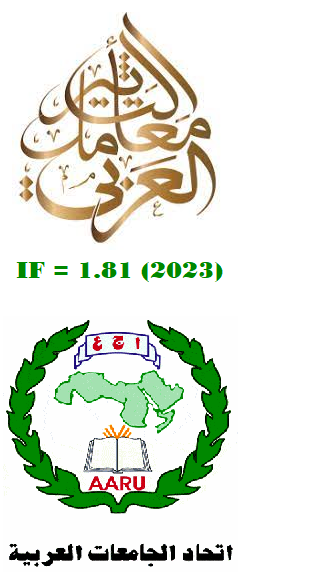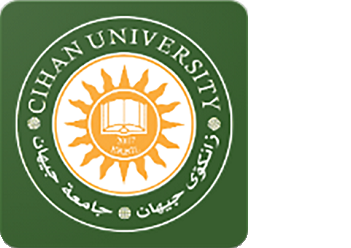How Language Creates Bonds among Cross-Cultural Communities
Abstract
The objective of this thesis is to evaluate how the use of language creates bonds among cross-cultural communities. Language is an important aspect of human relationships because it is the primary way of communication. The use of language becomes more vital and intricate in cross-cultural communities due to the fact that language reflects culture. Another objective that will be evaluated is the challenges faced when using different languages in cross-cultural communities and how these barriers impact the bond created in cross-cultural communities. The significance of language in cross-cultural communities is becoming a more prominent topic in development literature and social studies on a global scale. The operational principles and mindset of a community are developed and expressed in their methods of thinking, behaving, and engaging with the outside world through language and culture. Language has an essential role in integrating economic, political, and social changes, as well as other developing towns, which are intertwined with the cultures of these communities. The concepts of cross-cultural communities are built on the interconnections of various cultural and environmental elements. Secondary data were used to gather information for the topic of interest in this thesis and content analysis was used to examine the data gathered. The preservation of indigenous languages is vital to many people today because it protects their cultural heritage, just as language has always been a significant force in communities as a means of preserving one's own culture or controlling other people groups.
Downloads
References
Communication in Multiethnic Classrooms. Milton Park, Abingdon-on-Thames: Routledge.
Bernard, H.R., & Dressler, W.W. (2017). Culture and the Individual: Theory and Method of Cultural Consonance. Milton Park, Abingdon-on-Thames: Routledge.
Berry, J.W., Berry, J.W., Poortinga, Y.H., Segall, M.H., & Dasen, P.R. (2002). Cross-cultural Psychology: Research and Applications. Cambridge, United Kingdom: Cambridge University Press.
Carter, J.A., Lees, J.A., Murira, G.M., Gona, J., Neville, B.G., & Newton, C.R. (2005). Issues in the development of cross‐cultural assessments of speech and language for children. International Journal of Language and Communication Disorders, 40, 385-401.
Duszak, A. (2011). Cross-cultural Academic Communication: A discourse-community view. In: Culture and Styles of Academic Discourse. Berlin: De Gruyter Mouton. p11-40.
Evani, C.A.T, Lem, L.A., Nforbi, E., Biloa, E., Ntonifor, H., Balinga, S.R. (2016). How language influences social development: A crosscultural analysis of the language of development in sub-Saharan African multi-linguistic communities. International Journal of Applied Research, 2, 536-541.
Extra, G., & Verhoeven, L. (2020). Community languages in cross-cultural perspective. In: Community Languages in the Netherlands. CRC Press. p1-28.
Friedman, J. (1994) Cultural Identity and Global Process. Vol. 31. Thousand Oaks, California: Sage.
Fromkin, V., Rodman, R., & Hyams, N. (2018). An Introduction to Language. Boston, Massachusetts: Cengage Learning.
Genesee, F., Geva, E., Dressler, C., & Kamil, M. (2006). Synthesis: Cross-linguistic relationships. In: Developing literacy in second-language learners: Report of the National Literacy Panel on Language-Minority Children and Youth. Milton Park, Abingdon-on-Thames: Routledge. p153-174.
Hunsinger, R.P. (2006). Culture and cultural identity in intercultural technical communication. Technical Communication Quarterly, 15, 31-48.
Jackson, J. (2008). Language, Identity Study Abroad Lond. London, UK: Equinox Publishing.
Jakobson, R., & Halle, M. (2020). Fundamentals of Language. Berlin: De Gruyter Mouton.
Kim, Y.S. (2012). The relations among L1 (Spanish) literacy skills, L2 (English) language, L2 text reading fluency, and L2 reading comprehension for Spanish-speaking ELL first grade students. Learning and Individual Differences, 22, 690-700.
Konner, M. (2011). The Evolution of Childhood: Relationships, Emotion, Mind. Cambridge, Massachusetts: Harvard University Press.
Kormos, J. (2017). The effects of specific learning difficulties on processes of multilingual language development. Annual Review of Applied Linguistics, 37, 30-44.
Miller, G.A., & Johnson-Laird, P.N. (2013). Language and Perception. Cambridge, Massachusetts: Harvard University Press.
Montgomery, M. (2008). An Introduction to Language and Society. Milton Park, Abingdon-on-Thames: Routledge.
Pandey, P. (2014). Organizational culture-a root to prosperity, management. Insight, 10, 74-80.
Peterson, M.F. (2003). Culture’s Consequences: Comparing Values, Behaviors, Institutions, and Organizations across Nations. Thousand Oaks, California: Sage Publications.
Robbins, D. (1999). Bourdieu and Culture. Thousand Oaks, California: Sage.
Schumann, J.H. (1986). Research on the acculturation model for second language acquisition. Journal of Multilingual and Multicultural Development, 7, 379-392.
Tomasello, M. (2009). Constructing a Language. Cambridge, Massachusetts: Harvard University Press.
Trask, R.L. (2003). Language: The Basics. Milton Park, Abingdon-on-Thames: Routledge.
Copyright (c) 2022 Shalaw S. Abdulrahman

This work is licensed under a Creative Commons Attribution-NonCommercial-NoDerivatives 4.0 International License.
Authors who publish with this journal agree to the following terms:
1. Authors retain copyright and grant the journal right of first publication with the work simultaneously licensed under a Creative Commons Attribution License [CC BY-NC-ND 4.0] that allows others to share the work with an acknowledgment of the work's authorship and initial publication in this journal.
2. Authors are able to enter into separate, additional contractual arrangements for the non-exclusive distribution of the journal's published version of the work (e.g., post it to an institutional repository or publish it in a book), with an acknowledgment of its initial publication in this journal.
3. Authors are permitted and encouraged to post their work online (e.g., in institutional repositories or on their website) prior to and during the submission process, as it can lead to productive exchanges, as well as earlier and greater citation of published work (See The Effect of Open Access).









